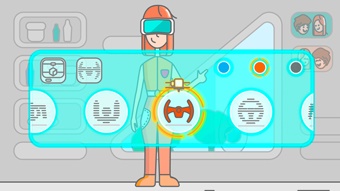Infertility is a big problem facing many people throughout the world. A lot of factors can cause infertility, like the effects of different medical treatments such as chemotherapy. A sad but true fact is that women who have used such treatments to win the battle against cancer have in the process lost their ability to have children.
However, a team of scientists from Northwestern University’s Feinberg School of Medicine and the McCormick School of Engineering have developed an implant that helps save the growing ovary cells so the infertile individual can reproduce.
Feeling the Glow of Happiness
The team designed the ovary bio-prosthesis, it imitates the natural follicle, which is the major component of the ovary process. The scientists, as explained in their article that was recently published in Nature Communications, needed to make a scaffold that is spherical and porous to allow the support cells to connect with the potential egg cell. They 3D printed a porous scaffold using Envisiontec’s Bioplotter (an extrusion type bio-printer) and implanted it in an infertile mouse. So they could monitor the results, these genetically altered mouse eggs contained a bioluminescence gene. The outcome of the experiment was successful; the mouse gave birth. Some of the offspring were glowing green, this showed that they were born from the implanted egg cells.
Is it Ready to be Tested on Humans?
It might be some time before these scaffolds can be implanted in people due to the need of using clinical grade materials in a regulated manufacturing environment, so the next step is to experiment on pigs. There are limits to this technology, the 3D printed prosthesis is only able to preserve the egg cells, so a woman, who would like to use them, should have banked the healthy follicles beforehand. The procedure is also not suitable for all cancer survivors due to the progress of the illness or the age before puberty, or some women may have genetic diseases and can’t produce ovaries. Another incredible direction of the team’s work is exploring the method of developing hormone produce cells of the ovaries from human skin. Ramille N. Shah, one of the researchers, said: “One of my primary motivations for being involved in biomedical research is to be able to engineer biomaterials and implants that can enhance patient quality of life.”
Our blog is also available for anyone with interesting story or useful life hacks, just write to us: press@treatstock.com
Share with friends:






